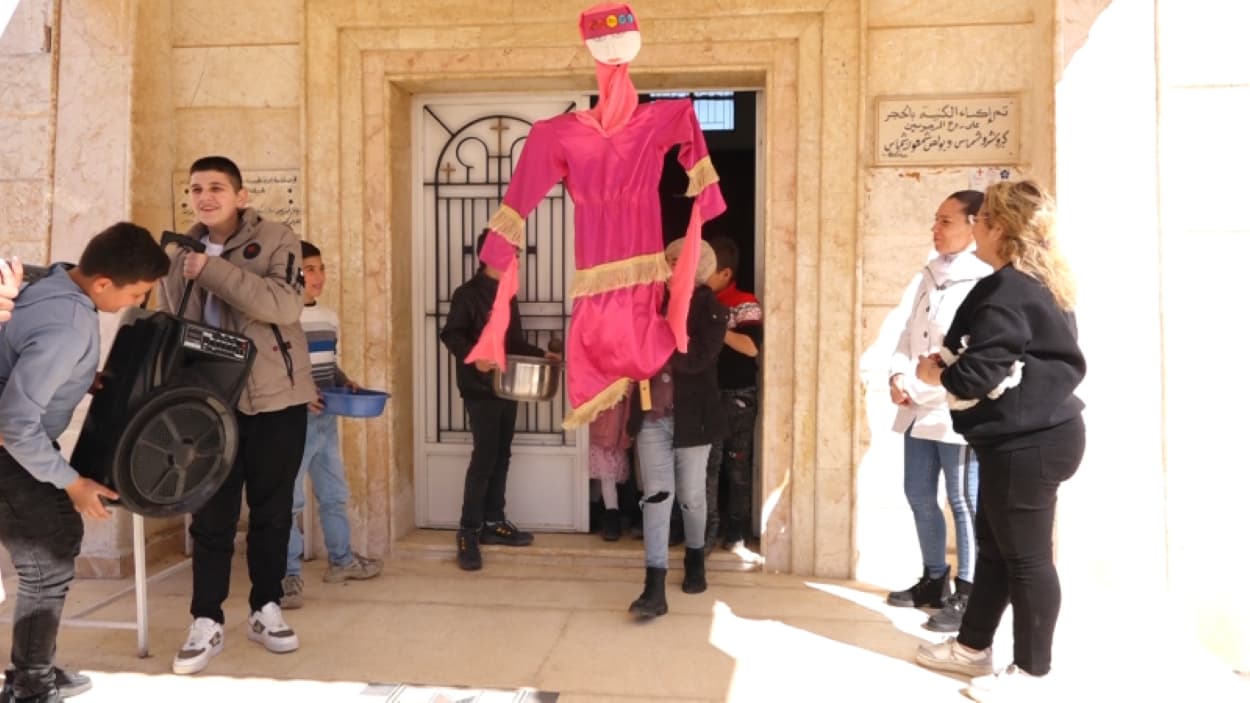On the Sunday before the Great Lent, many Aramean (Syriac) communities gather for a celebration called Hano Qritho. It’s a gentle, colorful tradition that blends faith, story, song, food, and the warmth of neighbors coming together. Though it was born long ago in Mesopotamia—in places like Tur Abdin in today’s southeastern Türkiye and across Syria—it continues to live on in villages and cities around the world.
Where the story comes from
At the heart of Hano Qritho is an old tale that echoes a scene from the Book of Judges (11:29–40). In the biblical story, the warrior Jephthah makes a vow tied to victory and his daughter becomes central to the story’s sorrow and remembrance. Over time, in local Aramean (Syriac) memory, a legend grew: a beloved young woman named Hano asks her friends for time to sing, dance, and say goodbye in the hills before her fate. The community promises never to forget her—keeping her memory with songs, gatherings, and acts of sharing.
How people celebrate
Timing. Hano Qritho takes place the Sunday before Great Lent—a last bright moment before weeks of fasting and reflection.
The Hano figure. In many towns, women craft a small Hano doll—a figure of hope and new life. Children then carry the doll from house to house, singing old songs. Homeowners sprinkle water over them, a sweet sign of blessing and abundance for the season ahead.
Food for all. Children and youth collect bulgur, butter, meat, and eggs. These are brought to the church yard or community hall, where a simple, hearty meal—often bulgur with eggs and sometimes kavurma—is cooked and shared. Nothing fancy, just the comfort of food made together and given to everyone. Leftovers are offered to families in need.
Play and laughter. There’s a playful custom of hiding a dish—often bulgur and egg—for the young people to find. Whoever discovers it is wished good luck for the year. Dancing and folk songs fill the afternoon, and when the day is done the Hano doll is broken or buried near the church, closing the circle of remembrance and renewal.
What it means
Hano Qritho is tender and brave at the same time. It remembers a painful story but answers it with community, sharing, and joy. It’s the last warm meal and last burst of music before the quiet path of Lent. It teaches children that faith is not only in sermons—it is also in hands that cook for others, feet that dance together, and voices that sing the old songs.
Still alive—near and far
You can still see Hano Qritho in northeastern Syria, in villages across Tur Abdin, and in the diaspora—from Sweden to the Netherlands and beyond—where Aramean (Syriac) families keep the custom with local gatherings, church events, and cultural centers. Wherever it is kept, the heart remains the same: remember, rejoice, and get ready for Lent

